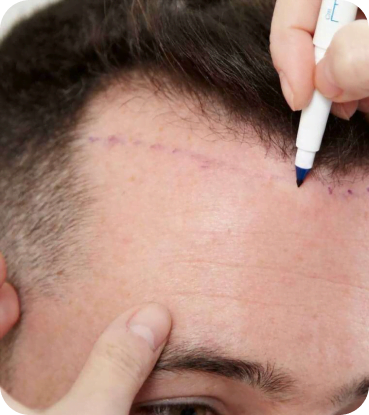Preparation and Procedure
Our doctor will give you instructions on how to prepare for hair transplant surgery. It includes guidelines on eating and drinking, smoking cigarettes, and taking or avoiding certain medications. If you smoke cigarettes, make sure that you stop at least a week before your surgery. It can interfere with blood flow to the skin during the healing process after surgery.
After the surgery, arrange for someone to drive you home. Take it easy for a day or two and have someone help you if needed.
At Sarasota Hair Transplant Center, the surgery takes place at our office-based facility. It does not even take a whole day to do the operation. Dr. Hamwi, Clinician Gieger, and Clinician Daniels will tell you how many hair grafts you need and how long the procedure will take so that you know what to expect. Usually, a hair transplant procedure starts in the morning and ends in the afternoon.
The ATERA FUE system makes this process more optimized. The hand unit can use three different punch sizes that are more adaptable to your specific case than other systems. Here’s how an ATERA FUE procedure will go:
- Dr. Hamwi and his team will shave the donor area on the back of your head.
- Local anesthesia is given over the donor area to make you more comfortable.
- The hair restoration specialist extracts hair follicles from the donor area using micro punches under 3-5x magnification.
- After extraction, the collection system puts them into a staging area that digitally counts the number of extracted units and keeps them optimal for grafting by putting them in a moist, cooled state.
- The clinicians will carefully transplant the harvested hair onto the desired area.




